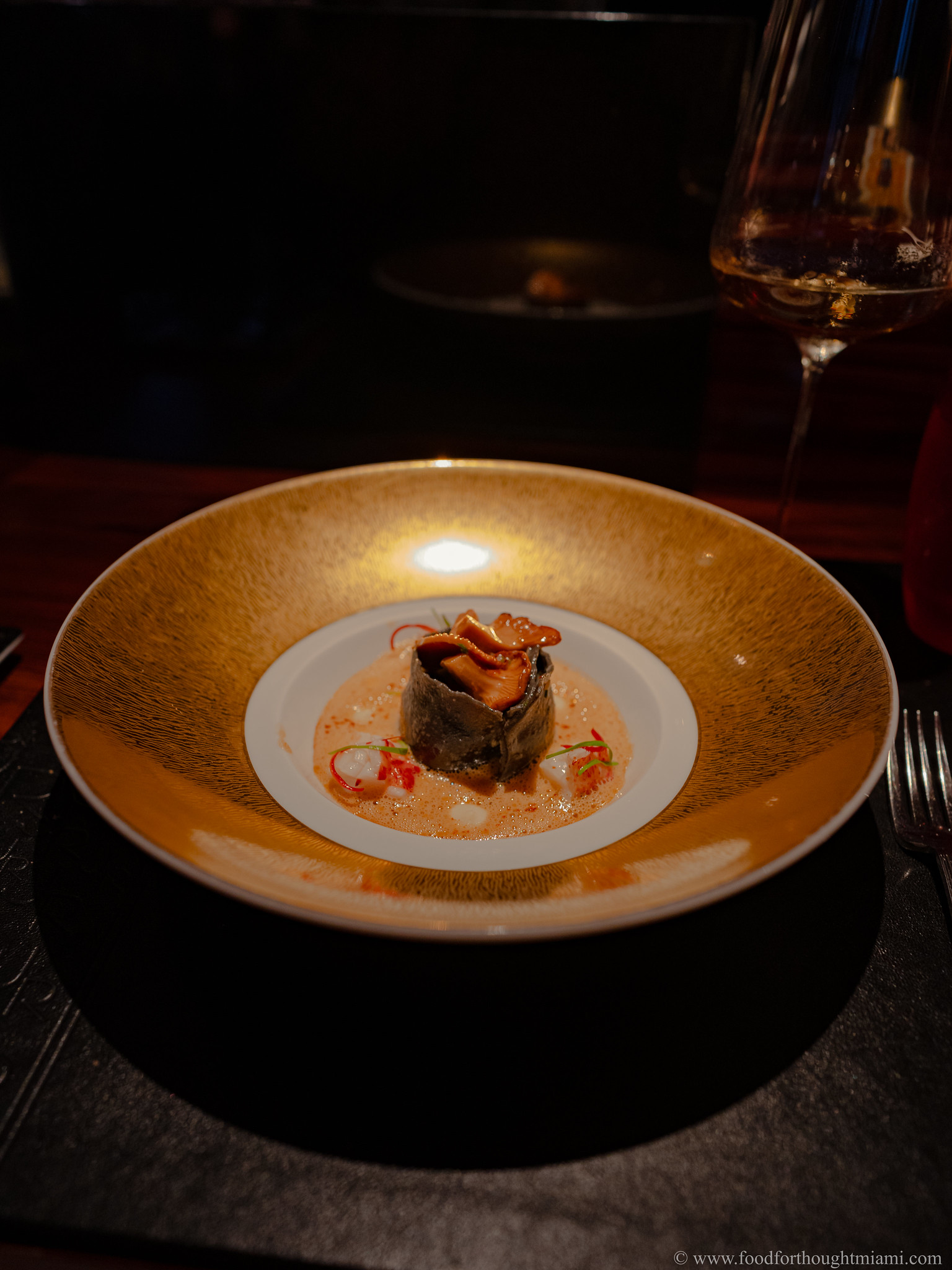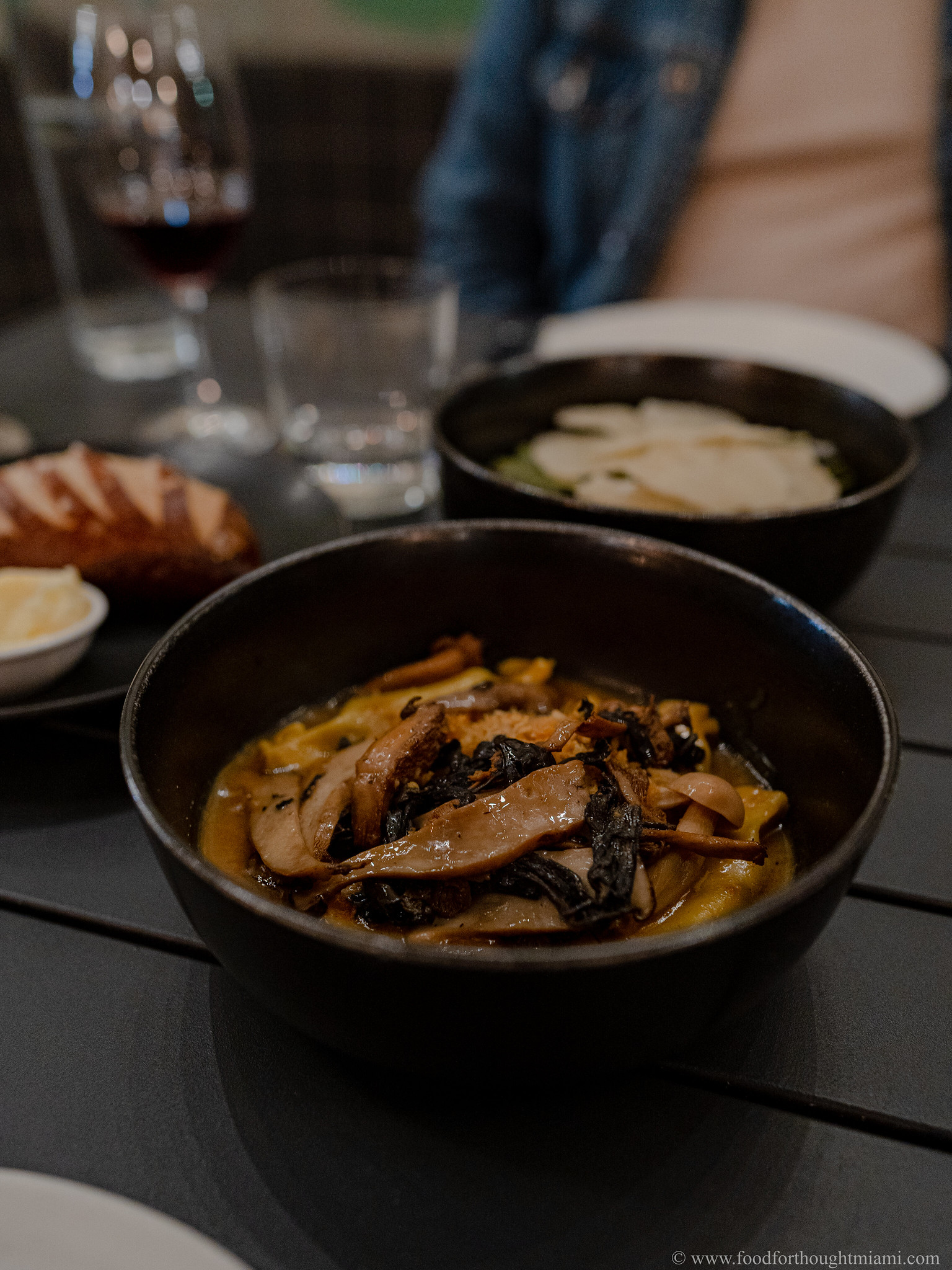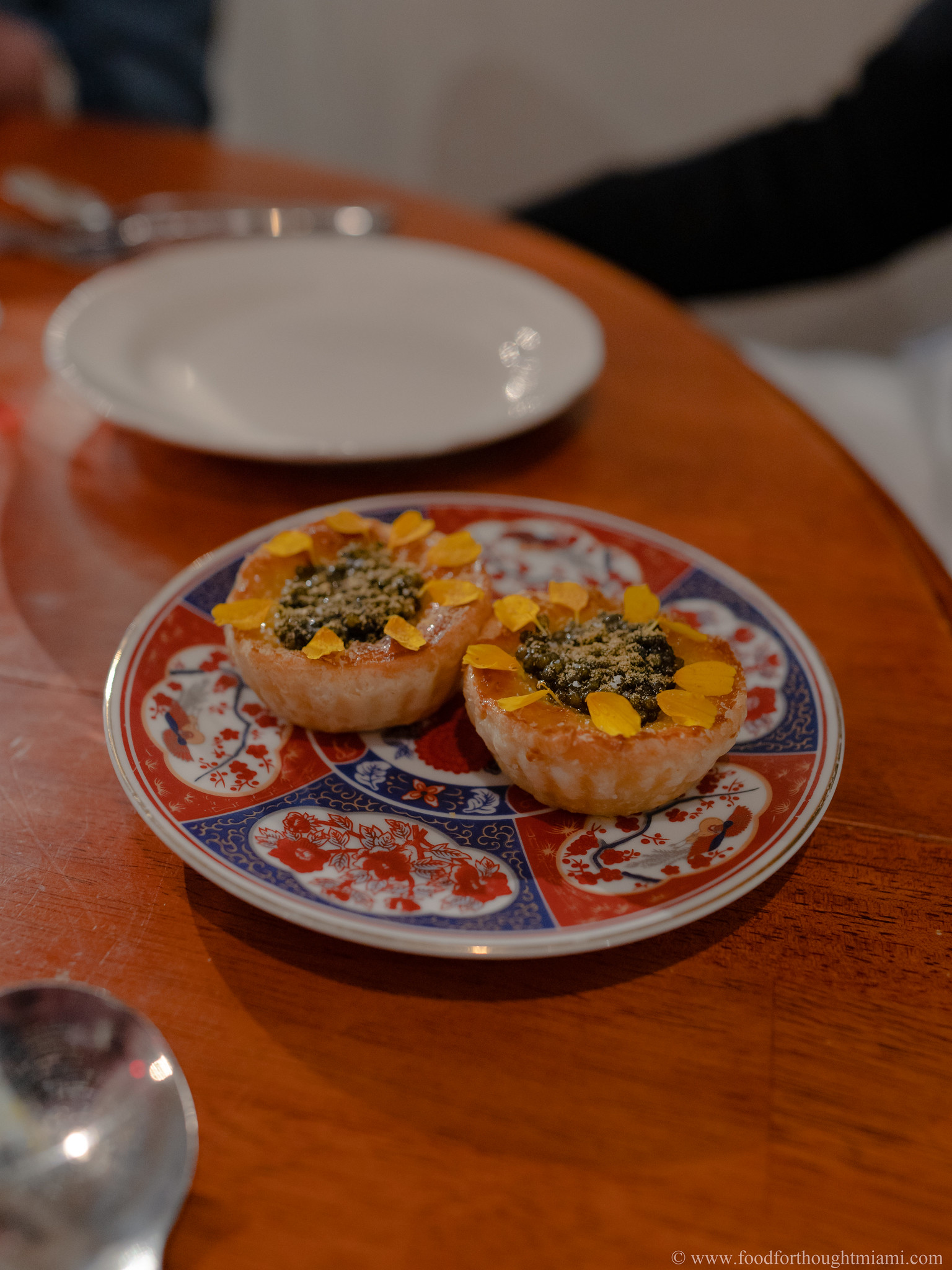 |
| bluefin tuna tiradito - Maty's (Midtown Miami) |
How gratifying was it to see a huge picture of this beautiful dish splashed across the landing page of New York Times' list of "America's Best Restaurants 2023"? This was the year the national media really caught wind of the great things the Chang Gang are doing down here, as I noted in Round 1 while singing the praises of Nando's spot, Itamae. It took me a few months after it opened to get to sister Val's new restaurant, Maty's, but by the time I visited it was absolutely firing on all cylinders. While Itamae skews more towards the Japanese influences on Peruvian cuisine, Maty's sticks with a more "traditional" repertoire - cebiches, tiraditos, jaleas and saltados feature prominently, but done in a finessed and contemporary way.
 |
| scallop cebiche - Maty's (Midtown Miami) |
Pretty much every dish felt like a highlight, but I was especially fond of that tiradito which made the NYT cover, of bluefin tuna in an aji limo leche de tigre with canary beans for some earthy grounding and beads of finger lime to provide a little extra acidic pop. Also, this cebiche of delicate scallops in a scotch bonnet leche de tigre with cilantro oil and coins of slivered grapes for a sweet-sour contrast. Great ingredients, lots of legumes and vegetables, and bright flavors that almost ripple with electric energy. This was one of the most exciting, invigorating meals I've had in a while.
 |
| tostada de anchos - Bar Gilda (Miami Beach) |
Over the summer, chef Juan Garrido was popping up Mondays and Tuesdays at Tropezon on Española Way with a pintxos-themed menu called "Bar Gilda". The rotation would change a bit from week to week, featuring staples like the namesake gilda,[1] tortilla española, patatas bravas, and bocatas de calamares, with occasional detours. I thoroughly enjoyed every single bite – especially these delightful toasts of Cantabrian anchovies, fancy butter, and a sharp, fresh parsley-garlic dressing, mounted over crisp puff-pastry crackers. A classic combination, and an ode to really good ingredients. Having now recalibrated my pintxos-meter with a visit to the motherland later in the year, I can say that this as close to a real-deal Basque pintxos bar as I've experienced in Miami.
 |
| le homard - L'Atelier de Joel Robuchon (Miami Design District) |
It had been a minute since I'd last visited L'Atelier, the Joel Robuchon outpost in the Design District, and the only Florida restaurant which has been bestowed two stars in the Michelin Guide. The design of the Atelier restaurants is consistent throughout their locations around the globe, and for me anyway, there's still something slightly surreal about encountering the distinctive shining black, red, polished wood and gleaming chrome dining room and open kitchen here in Miami. There are a few ways to experience the Miami L'Atelier – the "Evolution" tasting menu, a shorter seasonal menu with a couple options for each round, some classic "specialties" that can be added on, and even a straight a la carte menu on weekdays. From an early fall seasonal menu, my favorite dish was this spiral agnolotti with lobster and chanterelle mushrooms, swimming in a rich, powerful lobster bisque.
Comparing the ratings of the Ateliers around the world is a curious exercise. The "flagship" Atelier in St. Germain, Paris has one star, as does a second location in Etoile, Paris as well as the Tokyo outpost. Meanwhile, the Miami Atelier has two stars, as do the ones in Geneva and Taipei. The Atelier in Hong Kong has three stars! The ones in London, Madrid and Dubai have none. What does it all mean? That you can get a better meal at an Atelier in Hong Kong or Miami than at one in Paris? That Michelin is grading on a curve when it awards stars in different cities? That maybe the stars are kind of arbitrary? Inquiring minds want to know!
 |
| akamutsu, buro - Mila Omakase (Miami Beach) |
Miami has seen a boom in high-priced omakase venues over the past few years, and I am far from convinced that they all are capable of delivering on their sometimes vertigo-inducing tariffs.[2] So I approached Mila Omakase with a healthy degree of skepticism. Also, Mila, the main restaurant in which it makes its home, seems like a douchebag magnet? But after clearing our way past the hostess stand and entering the insulated inner sanctum of the omakase room, where a cherry blossom tree overhangs the sushi counter, I was very pleasantly surprised. Chef Reiji Yoshizawa and his crew show some solid technique and use some very good ingredients, but what I was particularly enamored of were the occasional flashes of Filipino flavors that appear here and there (Chef Yoshizawa grew up in Manila). It showed up in one of the opening bites, a canape with creamy kinilaw flavors in a crispy round shell. And it came around again with a nigiri of lightly torched akamutsu[3] topped with a daub of buro, a rich, funky fermented shrimp and rice paste, which nicely complemented the pleasingly fatty fish.
 |
| spiny lobster chawanmushi - EntreNos (Miami Shores) |
Maybe the most exciting newcomer of the year for me is EntreNos, an extended pop-up at Tinta y Cafe in Miami Shores by chefs Evan Burgess and Osmel Gonzalez. The two chefs both did time at Michael Beltran's Ariete, and Evan's resume also includes Miami's late great Alter and Chicago's Boka restaurant group, while Osmel spent time on the west coast as sous chef at one of my favorite places, SingleThread in Healdsburg. Back home and together, they are focusing on local products through a short, tightly curated menu with a dedication and creativity I have rarely seen here. A crudo uses blue runner, a dark-fleshed local fish in the jack family used more often as bait than as dinner, but which when sourced and handled well, as here, is deliciously rich and meaty. Accompaniments include a carambola vinaigrette, local leaves and blooms, and another thing I've never seen done with a local product — mango "olives" made by brining young, unripe mangoes. Oysters from Sebastian Inlet are grilled and topped with brown butter chimichurri. Desserts include a tomme cheese panna cotta topped with a sorbet of sea grapes, a ubiquitous but rarely used local product. I've had a couple different variations of their chawanmushi – one with smoked grouper, and another, pictured here, with spiny lobster. A creamy, frothy onion foam blankets the egg custard, hiding nuggets of savory confited potatoes underneath. This simultaneously triggers memories of seafood chowder (lobster / cream / potato), tortilla española (egg / onion / potato), and maybe even carbonara with the smoked grouper version (smoked fish playing the role of bacon). Regardless of what associations you may draw, it is flat out delicious.
(continued ...)




